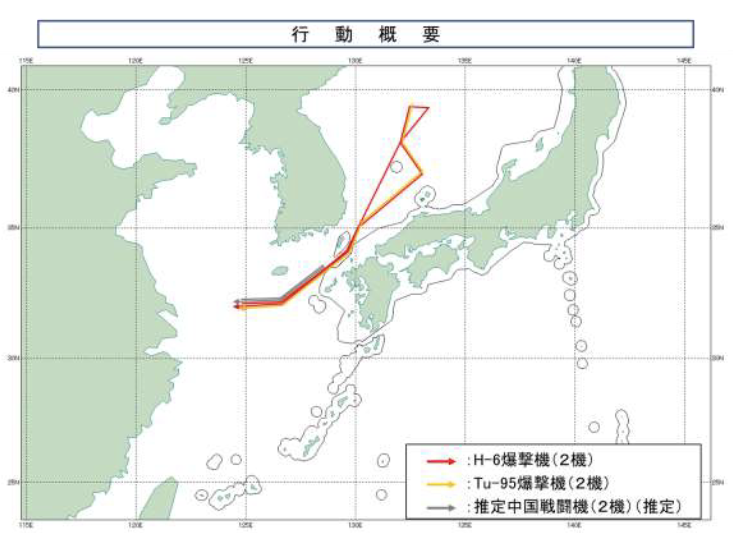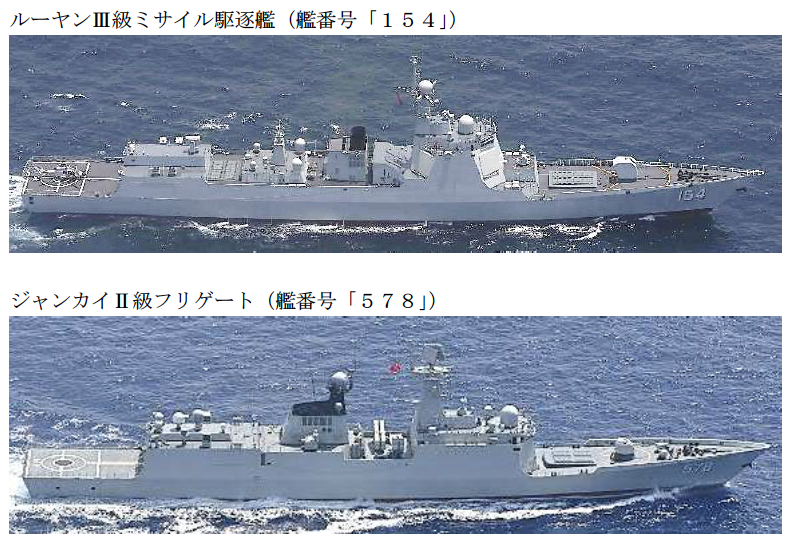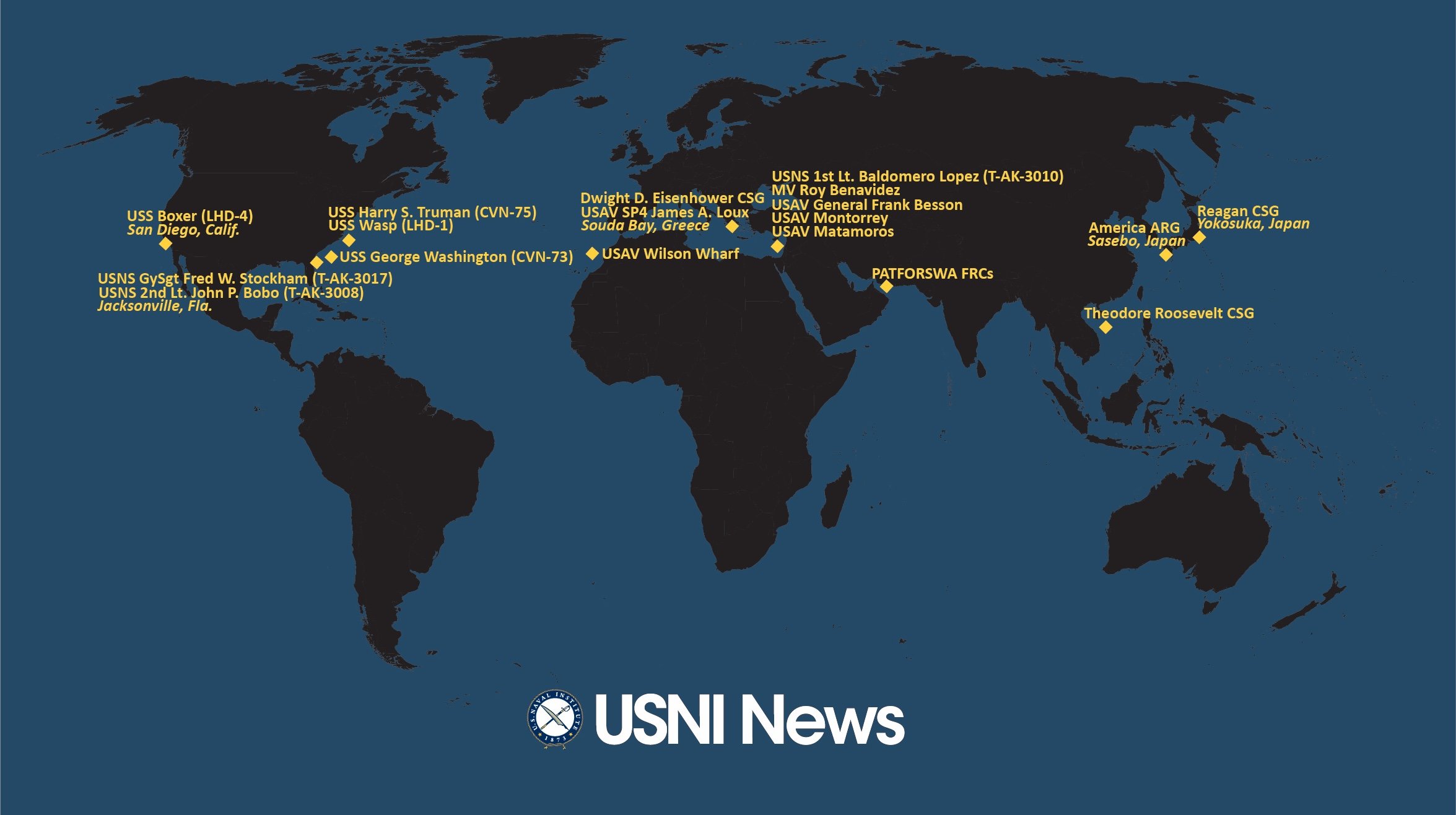
Russian and Chinese bombers flew a joint mission over the Sea of Japan and the East China Sea on Tuesday – marking their first joint bomber flight since November – during a summit between the U.S., India, Japan and Australia.
Meanwhile, the Russian Pacific Fleet sortied from Vladivostok on Monday for a series of exercises that will continue through June 20. At the same time U.S., Russian and Chinese warships are involved in a joint multilateral exercise in the Makassar Strait under the aegis of the Indonesian Navy.
On Tuesday, two Chinese H-6 bombers entered the Sea of Japan from the East China Sea and rendezvoused with two Russian Tu-95 bombers, according to a statement from Japan’s Joint Staff Office of the Ministry of Defense. The joint bomber formation flew to the East China Sea, where two more Chinese fighters joined the joint flight over the East China Sea. In response, fighters from the Japan Air Self-Defense Force Western Air District scrambled to intercept.
South Korea’s Yonhap News Agency reported that South Korea’s Joint Chiefs of Staff sent out a message to the media saying that four Chinese and four Russian military aircraft entered the Korean Air Defense Identification Zone (KADIZ). The Chinese and Russian aircraft entered the southern and eastern parts of the KADIZ, respectively, and exited it between 11:52 a.m. and 1:49 p.m. local time, with no violations of Korean airspace. South Korea also scrambled fighters in response to the aircraft.
China’s Ministry of National Defense issued a brief news release on the flight, stating: “According to the annual cooperation plan between the Chinese and Russian militaries, on June 6, the two sides organized and implemented the sixth joint air strategic patrol in the relevant airspace of the Sea of Japan and the East China Sea.” Russia has yet to issue a release.

Meanwhile, the Russian Pacific Fleet departed on Monday for exercises in the Sea of Japan and Sea of Okhotsk, Russia’s Ministry of Defense announced.
“In accordance with the training plan for the military management bodies of the Pacific Fleet for 2023, operational exercises of various naval forces in the far sea zone are being conducted from 5 to 20 June in the waters of the Sea of Japan and the Sea of Okhotsk under the command of the Pacific Fleet Commander, Admiral Viktor Liina,” reads the statement.
The exercise pairs ship tactical groups with Russian naval aviation to search for and track mock enemy submarines, work out the organization of ship detachments’ air defense, as well as the organization of logistics at sea. More than 60 warships and supply vessels, approximately 35 aircraft of the Russian Naval Aviation, Coastal Troops and more than 11,000 military personnel are involved in the exercises, the Russians said.
In Indonesia, the U.S., Russia and China are among 36 countries participating in the Indonesian Navy’s Multinational Naval Exercise Komodo held in Makassar, Sulawesi. The drills began on Monday and end Thursday.
Komodo is a non-warfare exercise focused on regional cooperation and Humanitarian and Disaster Relief (HADR) operations. The U.S. is among the navies that have sent ships for the exercise, participating with Littoral Combat Ship USS Manchester (LCS-14), which quietly entered the region. The first public acknowledgement of the ship operating in the Western Pacific was when it made a port call to Bali on May 31.
Russia is participating with a surface action group that includes corvettes RFS Sovershennyy (333) and RFS Gromkiy (335) and fleet oiler Pechenga. The People’s Liberation Army Navy (PLAN) contingent includes destroyer CNS Zhanjiang (165) and frigate CNS Xuchang (536). Other foreign ships in the exercise are Indian Navy frigate INS Satpura (F48); Italian Navy offshore patrol vessel (OPV) ITS Francesco Morosini (P431); Pakistan Navy frigate PNS Tippu Sultan (F263); Philippine Navy OPV BRP Andrés Bonifacio (PS-17); Republic of Singapore Navy frigate RSS Steadfast (70) and littoral mission vessel RSS Sovereignty (16); Royal Australian Navy frigate HMAS Toowoomba (FFH156); Royal Malaysian Navy OPVs KD Kedah (171) and KD Kelantan (175); Royal Thai Navy frigate HTMS Bhumibol Adulyadej (FFG-471) and Vietnam People’s Navy corvette HQ-20. Host nation Indonesia is deploying 13 ships for the exercise.

From Saturday to Monday in the East China Sea, destroyer JS Shiranui (DD-120), part of the first surface unit of the JMSDF’s Indo-Pacific Deployment 2023 (IPD23), and a P-1 Maritime Patrol Aircraft conducted the Japan-U.S.-Australia-Canada multilateral exercise “Noble Wolf” with Royal Australian Navy frigate HMAS Anzac (FFH150), Royal Canadian Navy frigate HMCS Montreal (FFH336) and replenishment ship MV Asterix, and U.S. Navy destroyer USS Chung-Hoon (DDG-93), the Japan Maritime Self-Defense Force said in a Tuesday news release.
The exercise included tactical drills and is a part of the U.S. Indo-Pacific Command-led Large-Scale Global Exercise 2023 (LSGE23), according to the JMSDF. Chung-Hoon and Montreal transited the Taiwan Strait on Saturday, with Chung-Hoon involved in a near-collision incident with PLAN destroyer CNS Suzhou (132).





